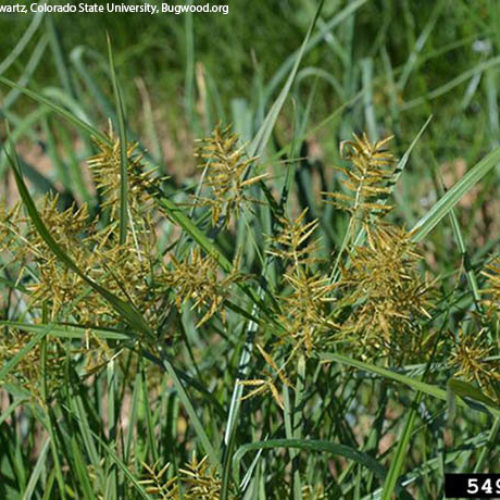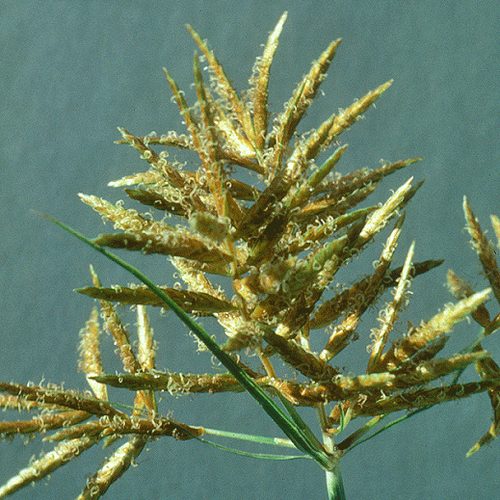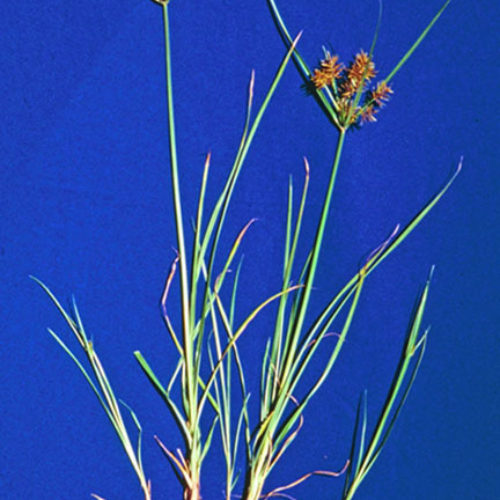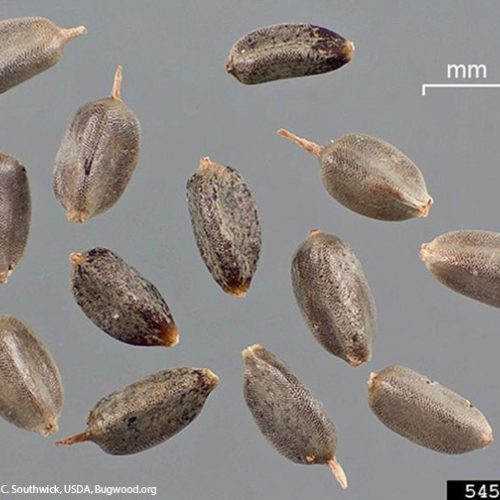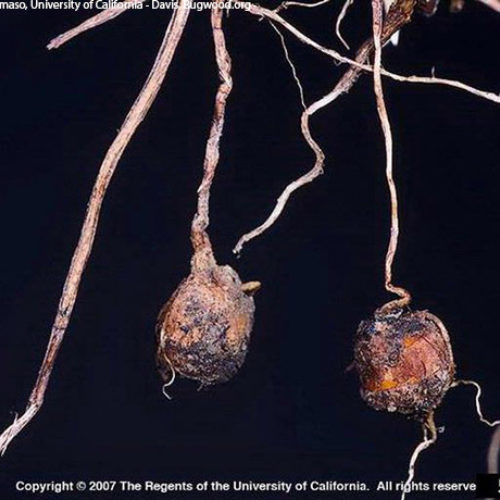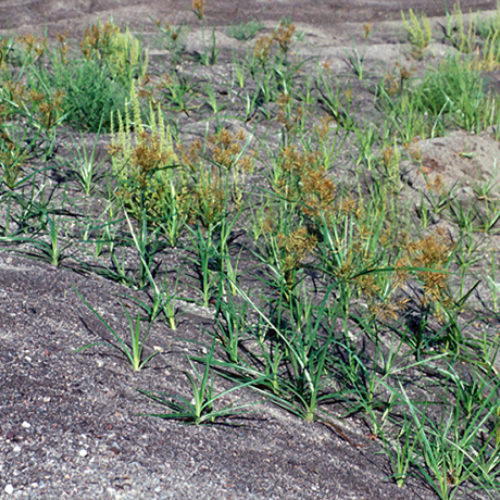Yellow Nutsedge
Cyperus esculentus
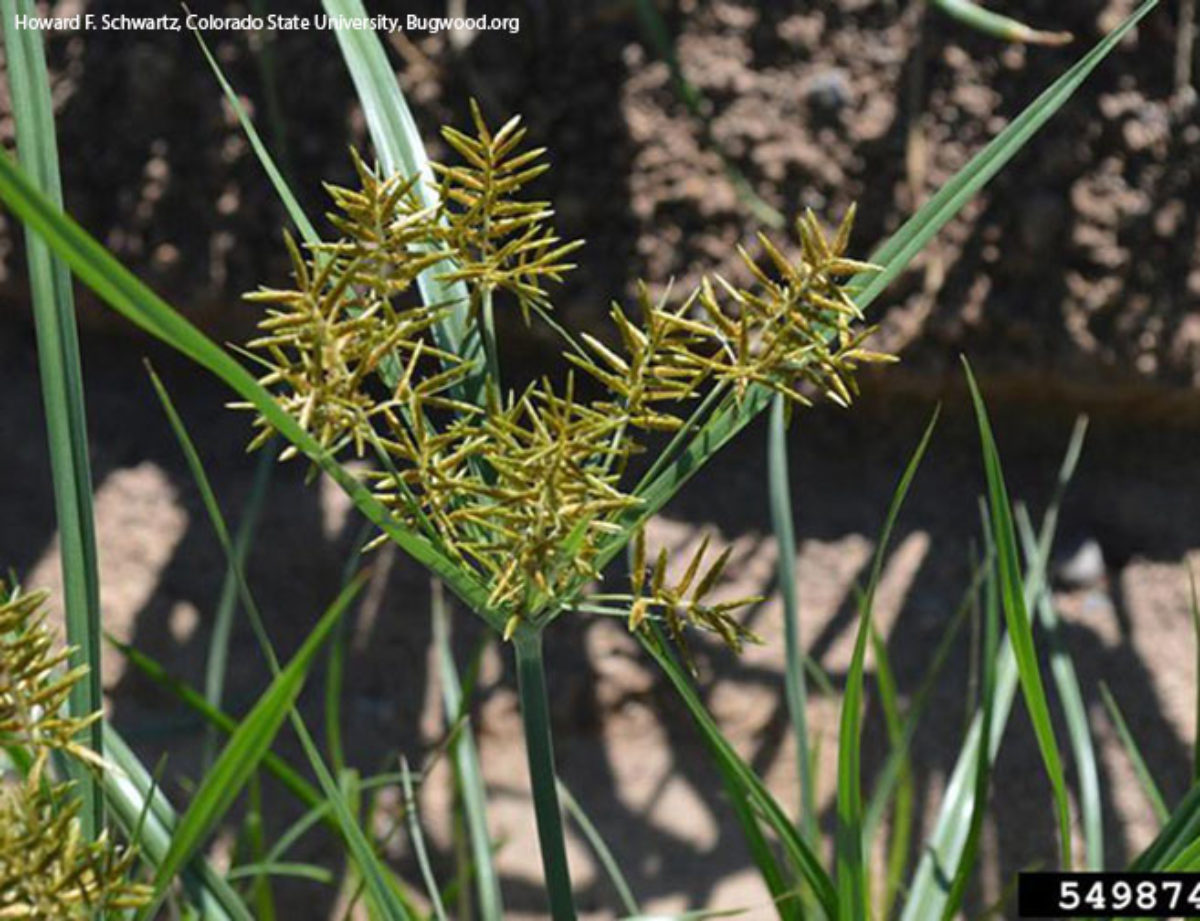
Family: Cyperaceae
Other Common Names: yellow nutgrass, chufa flatsedge, earth-almond
Weed class: B
Year Listed: 1988
Native to: Europe
Is this Weed Toxic?:
not known to be
Legal listings:
This plant is also on the Washington State quarantine list. It is prohibited to transport, buy, sell, offer for sale, or distribute plants or plant parts of quarantined species into or within the state of Washington or to sell, offer for sale, or distribute seed packets of seed, flower seed blends, or wildflower mixes of quarantined species into or within the state of Washington. Please see WAC 16-752 for more information on the quarantine list. For questions about the quarantine list, contact the Washington State Department of Agriculture's Plant Services Program at (360) 902-1874 or email PlantServices@agr.wa.gov.
Why Is It a Noxious Weed?
It is considered one of the world's worst weeds. It is highly adaptable to irrigated agricultural areas. It competes with crops for resources and reduces crop yield. Research suggests that this species may produce chemicals that are toxic to crops.
How would I identify it?
General Description
Yellow nutsedge is a perennial plant growing from an extensive system of rhizomes, tubers and roots, with stems reaching 12 to 32 inches tall. With age, its rhizomes develop tubers and basal bulbs that bear aerial shoots.
Flower Description
Flowers are straw colored to golden-brown, in spikelets 5-30 mm long. Spikelets are arranged in an umbel-like, open inflorescences. Leaf-like bracts occur at the base of the inflorescence, the longest being much longer than the inflorescence.
Leaf description
Leaves are narrow (4-9 mm wide) and grass-like, pointed at the tips and keeled, about equal to or longer than the flower stems. Leaves are 3-ranked and mostly clustered at the base of the stem.
Stem description
Stems are erect, simple (not branched), hairless and triangular in cross-section.
Fruit Seed Description
Seeds are yellowish-brown, three-angled and are about 1/16 inch long.
May Be Confused With
Similar to a monitor list species, tall flatsedge (Cyperus eragrostis. Yellow nutsedge has a loose, open inflorescence--not in a dense, spherical cluster like tall flatsedge
Where does it grow?
Yellow nutsedge grows in croplands as well as along margins of lakes, rivers, streams and marshes. Please click here to see a county level distribution map of yellow nutsedge in Washington.
How Does it Reproduce?
Yellow nutsedge spreads by seed and by tubers, rhizomes, and corm-like basal bulbs. Seeds and tubers are dispersed with agricultural and nursery activities, soil movement and by water. Seeds can also be dispersed by the wind.
How Do I Control It?
Mechanical Control
Tillage at four week intervals depletes the energy reserves of the tubers.
Cultural Control
Crop competition can be used effectively since fast growing crops, planted at high densities, will form dense canopies that can then outcompete yellow nutsedge.
Herbicide Control
Please refer to the PNW Weed Management Handbook, or contact your county noxious weed coordinator.
For More Information
See our Written Findings for more information about yellow nutsedge (Cyperus esculentus).
Franklin County NWCB Fact Sheet on yellow nutsedge
Pierce County NWCB Fact Sheet on yellow nutsedge
Oregon Department of Agriculture's profile of Cyperus esculentus
eOrganic article for organic growers on Cyperus esculentus
WTU image database information on Cyperus esculentus



